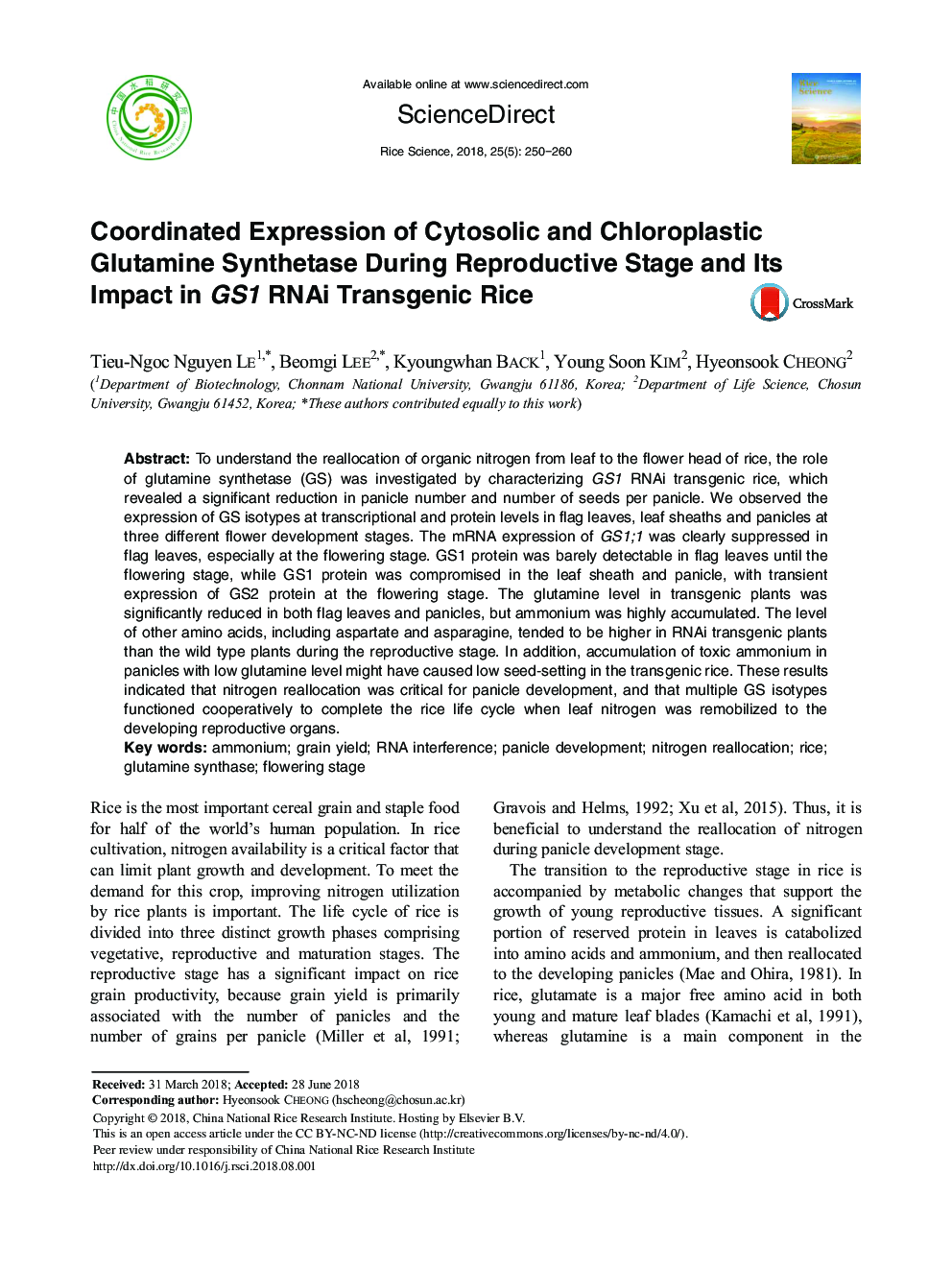| Article ID | Journal | Published Year | Pages | File Type |
|---|---|---|---|---|
| 8959369 | Rice Science | 2018 | 11 Pages |
Abstract
To understand the reallocation of organic nitrogen from leaf to the flower head of rice, the role of glutamine synthetase (GS) was investigated by characterizing GS1 RNAi transgenic rice, which revealed a significant reduction in panicle number and number of seeds per panicle. We observed the expression of GS isotypes at transcriptional and protein levels in flag leaves, leaf sheaths and panicles at three different flower development stages. The mRNA expression of GS1;1 was clearly suppressed in flag leaves, especially at the flowering stage. GS1 protein was barely detectable in flag leaves until the flowering stage, while GS1 protein was compromised in the leaf sheath and panicle, with transient expression of GS2 protein at the flowering stage. The glutamine level in transgenic plants was significantly reduced in both flag leaves and panicles, but ammonium was highly accumulated. The level of other amino acids, including aspartate and asparagine, tended to be higher in RNAi transgenic plants than the wild type plants during the reproductive stage. In addition, accumulation of toxic ammonium in panicles with low glutamine level might have caused low seed-setting in the transgenic rice. These results indicated that nitrogen reallocation was critical for panicle development, and that multiple GS isotypes functioned cooperatively to complete the rice life cycle when leaf nitrogen was remobilized to the developing reproductive organs.
Related Topics
Life Sciences
Agricultural and Biological Sciences
Agricultural and Biological Sciences (General)
Authors
Tieu-Ngoc Nguyen Le, Beomgi Lee, Kyoungwhan Back, Young Soon Kim, Hyeonsook Cheong,
